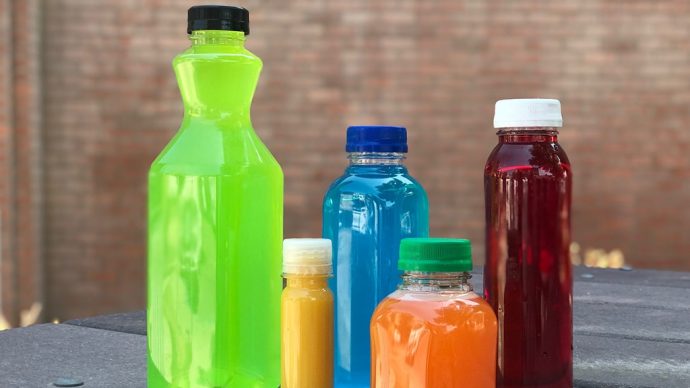A cold glass of juice goes a long way. It’s invigorating, tastes good, and usually provides a jolt of energy to get through a busy morning or slow afternoon. But while a few sips of OJ, apple, tomato, or carrot can be refreshing, it’s worth asking: is bottled juice actually fresh?

The answer is a bit more complex than you might assume. So, let’s jump in and take a closer look. Keep reading to explore where our modern-day juice products came from and how they’re made!
A Brief History of Juice
To answer our questions, we need to start at the beginning.
For the majority of human history, if you wanted juice, you’d squeeze a fruit. But, let’s be honest, that business model wasn’t exactly scalable.
So, at the onset of the 1900s, necessity birthed innovation. The result was canned juice and, while it tasted like battery acid, it was a step in the right direction.
And after a bit of trial and error, juice makers revealed their next iteration: concentrate. But, after a short while, despite its (even modern) fans, concentrate ultimately grew out of vogue, with naysayers demanding a less sugary alternative.
Due to the cries of these health-concerned consumers, the industry continued to evolve. And, ultimately, some of the biggest names in juice were able to produce an option that wasn’t concentrated (only pasteurized) to secure a win and meet the demands of their customers. This final iteration is what we now love and drink today — your typical, tasty grocery store juice option.
Yet even after so many ups and downs in the development process, consumers are still often left wondering, is my juice fresh or healthy just because it’s “not from concentrate?”
Farm to Factory
To answer the freshness question, it’s important to look at the entire bottled juice process as a whole. How does it work? Let’s take a look.
No matter the fruit (e.g., oranges, apples, grapes, etc.), the flow is roughly the same. Farmers harvest crops from their farm, field, or grove, send them through a cleaning process, and check for impurities.
Then, once the fruit is cleared for production, manufacturers extract the fruit juice itself and begin collecting large repositories of sweet and delicious flavor. From there, vendors pasteurize (aka heat-treat) the juice to kill any harmful bacteria and then use a high-tech juice filling machine to bottle everything up for mass distribution.
What’s the Verdict?
You may be wondering, “okay, I get where juice came from, and I get how it’s made.” But what’s the verdict? Is it fresh?
Well, we’re here to tell you that you might actually be asking the wrong question. Here’s why.
Sure, the juice you drink is a far cry from the fruit that made it, but that doesn’t necessarily mean it’s unhealthy or bad. Actually, the processes used to make your favorite juices were created to keep you healthy!
Bottled Juice: A Breakfast Staple
All in all, bottled juice has a flavor just as rich as its history. And while a gallon of Tropicana might not be fresh from yesterday’s orchard harvest, it still offers plenty of nutritional value when consumed in moderation.
So, kick back, pour a glass, and be sure to visit our site daily for all the latest news on your favorite morning beverages and beyond!

